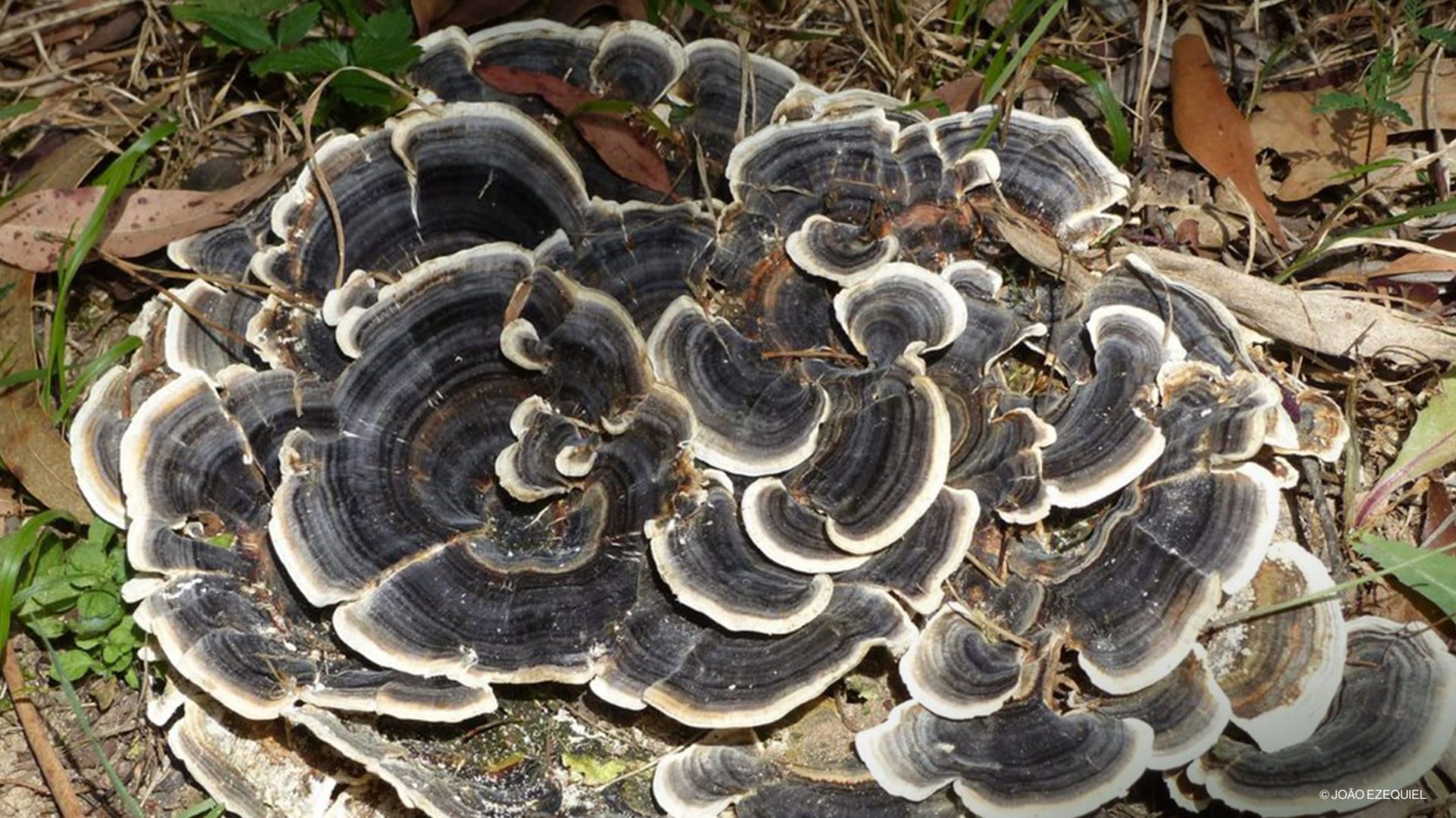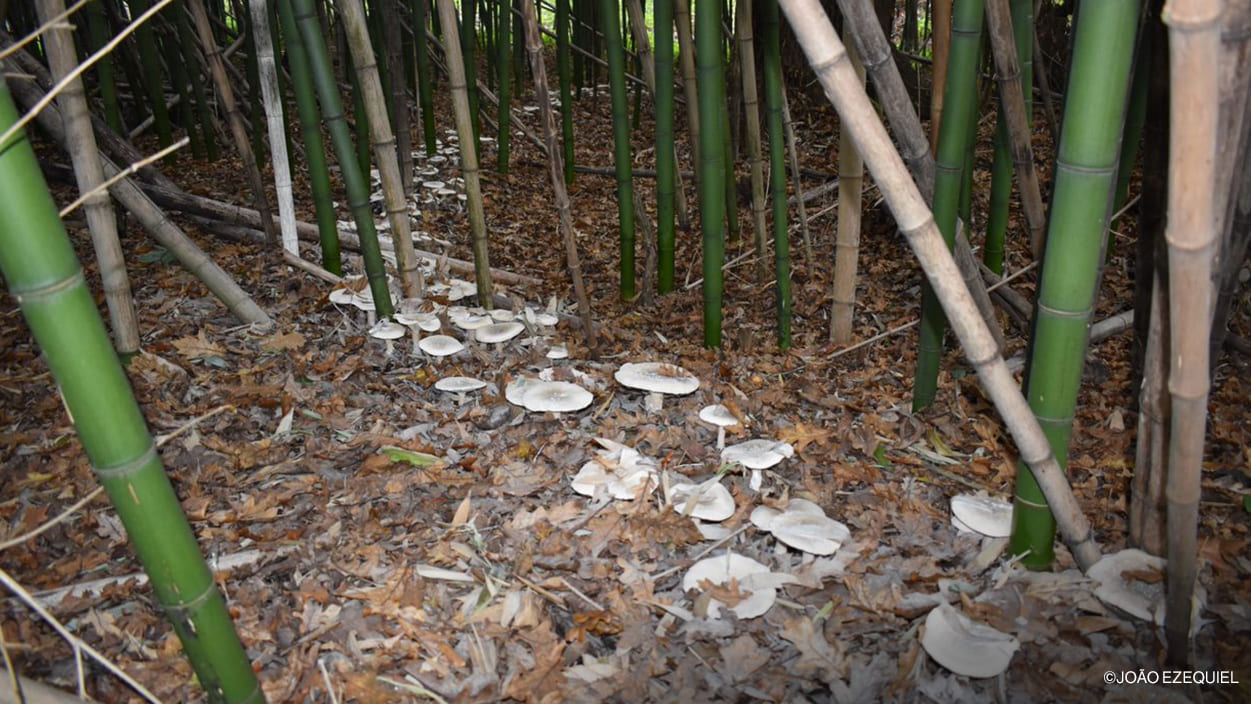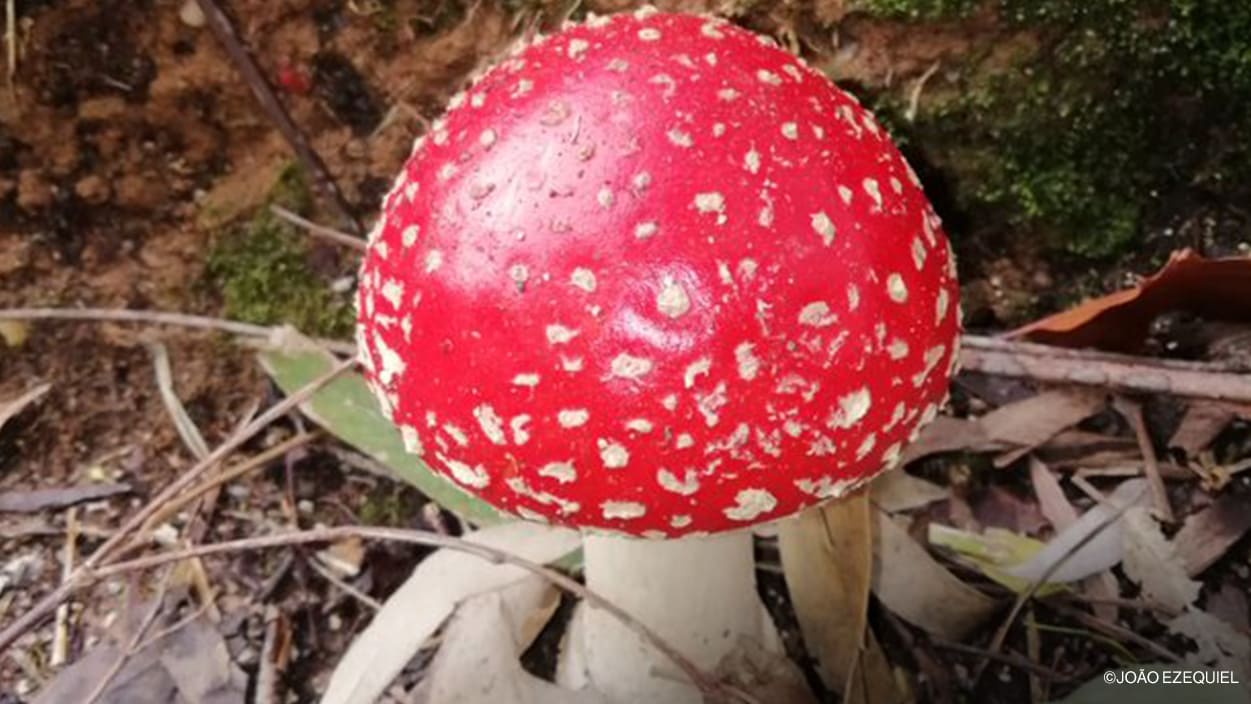Sheltered by the shade of the treetops, among the foliage that accumulates on the ground and even on dead trunks, there are over 50 species of mushrooms at Quinta de São Francisco. Discover some of these mycological wonders, some poisonous, some edible and others with a rather peculiar appearance, to say the least.
Quinta de São Francisco, on the outskirts of Aveiro, serves as a refuge for countless interesting creatures, including fifty or so species of wild mushrooms, each one with its own unique colour, shape, and characteristics.
“We have photographed and observed around 50 species. Although not all of them have yet been properly identified, this variety is a good illustration of the biodiversity of the macrofungi that can be found here”, says João Ezequiel, curator of this important conservation area for The Navigator Company, who adds: “learning about and publicising these species helps us to raise awareness of the fundamental role of mushrooms in forest ecosystems”.
Most of the mushrooms at Quinta de São Francisco can be seen after the first rains, from autumn onwards and during winter, because it is in damper conditions that many of these mycological wonders show themselves, “although they remain here all year round, invisible to the human eye”.
Like icebergs, the visible part of the mushroom is only a small fraction of these mysterious organisms. Under the soil, thin filaments (called hyphae) extend to form intricate networks (mycelium) that can stretch for several kilometres like roots. What we observe on the ground are only the reproductive ends of these creatures: fructifications (structures with functions similar to plant fruits) and sources of the spores (reproductive cells).
When we observe clusters of mushrooms of the same species, they are linked together by this underground network and often belong to the same organism. This is the case with the so-called fairy rings, mysterious circular formations composed of mushrooms which, in Irish mythology, were believed to create magical portals.







